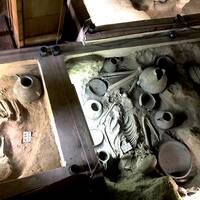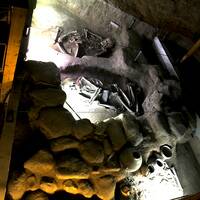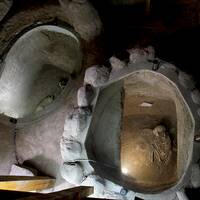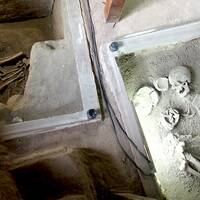
Iron Age Museum
One of the most unique and terrible site-museums around the world is Iron Age Site-Museum, an ancient cemetery in the heart of the ground, where 38 graves are put together in which many men and women, young and old individuals and several children were buried. This cemetery has remained from iron age that is about four thousand years ago. The class conflict, the grave of the rich and the poor are recognizable; the rich were buried with their possessions, women with their jewelry and children with their toys.
This wonderful cemetery was discovered accidentally in 1376 SH; during a project of constructing a mall and after diggings the region, the remaining of bodies buried in the cemetery were unearthed, therefore, the project was stopped and an archaeological excavation was started instead in the result of which this historical cemetery was exposed. The remaining of objects were restored and the museum becomes prepared for public visit. It is named Site-Museum because the skeletons have not been transferred to anywhere and they are exhibited in the original place of burial inside the original context. This is the first desert museum of Iran where you have to go downstairs to reach 38 graves placed in different levels indicating the hill-form of the cemetery. The bodies were buried in form of a fetal showing their belief in Meh or Mitra. The followers of this religion believed in afterlife, they were buried like a fetal around which drawn a short wall as the uterus.
In addition, there are objects in most of these graves like tools, food, toys or possessions that can be used in afterlife. The richer the dead person was, the more objects in his grave were put. Some corpses are more damaged and archaeologists explain this matter in such a way that this cemetery had been their second grave, they had probably been dead in time of migration and their bodies were returned to their hometown after a temporary burial elsewhere.
The humidity is high here because of its location lower than the ground level so the bodies are preserved in glass cases, the humidity is reduced using ventilation, and soil has been combined with chemicals in order to better conservation.
You can visit the site in all seasons, however, the weather of Tabriz is cold during winters. Your visit will last 30-45 minutes.



